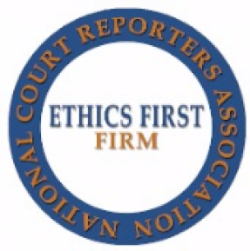Trial Presentation Assisting Attorneys Showcase Evidence with Clarity
Trial Presentation Assisting Attorneys Showcase Evidence with Clarity
Blog Article
Mesmerize the Jury: Essential Elements of a Powerful Test Discussion
Important components such as comprehending the target market, crafting an engaging narrative, and grasping verbal and non-verbal interaction are essential elements of an effective presentation. As these variables intertwine, they develop a natural strategy that not only notifies but likewise involves jurors on multiple levels.

Understanding Your Audience
Comprehending your target market is a crucial aspect of reliable trial presentation. A successful presentation depends upon the capability to comprehend the demographics, worths, and proneness of jurors. This understanding educates just how arguments are framed, evidence is presented, and emotional appeals are crafted, guaranteeing that the message resonates with the jurors on a personal level.
Research indicates that jurors come from diverse backgrounds and may have differing degrees of understanding relating to legal proceedings (trial presentation). Thus, it is essential to avoid legal lingo that can estrange or perplex them. Rather, utilizing clear, relatable language fosters engagement and comprehension. In addition, recognizing the jurors' possible predispositions and life experiences allows the test presenter to anticipate arguments and address problems proactively.
Effective test presentation likewise entails observing jurors' reactions throughout the proceedings. Involving with jurors as people rather than a cumulative unit is vital in fostering a strong link in the courtroom.

Crafting a Compelling Story
Crafting an engaging narrative is essential in guiding jurors via the complexities of a case. A well-structured story not just simplifies detailed legal concepts yet likewise engages jurors on a psychological level, making the details a lot more relatable and memorable.
This message must reverberate with the jurors' values and experiences, fostering a connection that transcends simple realities. This chronological approach can help jurors adhere to the development of events, stressing reason and impact.
Including human aspects-- such as individual stories or narratives-- can better improve the narrative's effect. These elements stimulate compassion, permitting jurors to picture the repercussions of the instance on actual lives. Additionally, employing a constant motif throughout the presentation strengthens the major debate, making it easier for jurors to keep crucial points.
Ultimately, a compelling narrative transforms a trial presentation from a mere recitation of facts into a convincing story that mesmerizes the jury, urging them to mull over with both factor and feeling.
Utilizing Visual Aids
Integrating visual help right into a test presentation can considerably enhance jurors' understanding and retention of details. Aesthetic materials such as charts, layouts, photos, and videos can transform intricate lawful principles and evidence into quickly absorbable layouts. By involving multiple detects, these aids enable jurors to picture the case's crucial elements, making special info it simpler for them to adhere to along and comprehend detailed information.
Furthermore, well-designed aesthetic aids can stress crucial points and emphasize connections between different pieces of proof. For instance, timelines can effectively show the sequence of events, while annotated photos can clear up certain details pertinent to the situation. This not just aids in understanding yet likewise enhances the narrative provided by the attorney.
It is important, nonetheless, to ensure that visual help matter, clear, and skillfully provided. Overly intricate or messy visuals might bewilder jurors and interfere with the message. When made use of judiciously, visual help serve to match the oral arguments and improve the total impact of the trial discussion. Inevitably, effective visual interaction can be an effective device in persuading jurors and assisting them get to educated conclusions.
Mastering Verbal Interaction
Reliable spoken communication is vital in a test discussion, as it offers as the key methods whereby attorneys convey their arguments and get in touch with jurors. Mastering this skill involves clearness, persuasion, and interaction. Lawyers have to articulate their points plainly and concisely, avoiding legal lingo that might perplex jurors. Simpleness in language cultivates understanding and aids jurors grasp complex issues provided during the trial.
Furthermore, tone and pacing considerably impact how messages are gotten. A positive tone conveys authority, while appropriate pacing permits jurors to soak up info without feeling bewildered. Attorneys should additionally vary their vocal inflections to highlight crucial factors and preserve jurors' passion throughout the discussion.
Additionally, the organization of spoken debates is important. Structuring the narrative rationally and coherently aids jurors reference adhere to the attorney's line of reasoning, making it easier for them to keep essential info. Making use of convincing methods, such as storytelling, can additionally boost the emotional vibration of the disagreements offered, thus creating an extra profound link with jurors.
Ultimately, grasping verbal communication not only reinforces a lawyer's instance yet also promotes trust and connection with the court, significantly boosting the chances of a positive decision.

Engaging With Body Movement
Nonverbal interaction plays an important role in test presentations, often communicating messages that words alone can not express. Body movement, encompassing gestures, position, faces, and eye get in touch with, significantly affects just how jurors regard the trustworthiness and genuineness of the presenter. A certain stance, with shoulders back and an open stance, can instill depend on, while closed-off body language may recommend defensiveness or uncertainty.

Face expressions ought to show the feelings connected with the instance, reinforcing the story existing. For circumstances, a sincere expression during a touching minute can generate compassion and enhance the sob story. Ultimately, understanding body language is crucial for efficient trial discussions, as it boosts spoken communication and establishes an engaging visibility that resonates with the jury.
Final Thought
To conclude, captivating the court he said demands a tactical technique that encompasses comprehending the audience, crafting an engaging narrative, using aesthetic aids, grasping spoken interaction, and involving with body movement. Each element plays a vital duty in creating a powerful test presentation that resonates with jurors on both emotional and intellectual degrees (trial presentation). By incorporating these components effectively, attorneys can dramatically boost their capacity to persuade and affect jury decision-making
Report this page